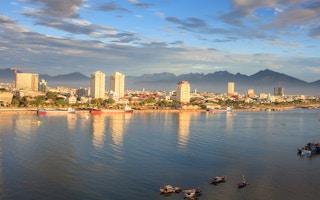Cities in Southeast Asia (SEA) are growing twice as fast as the rest of the world and by 2030, it is expected that 70 per cent of the Southeast Asian population will live in cities.
Worldwide, cities account for around two-thirds of global energy demand and greenhouse gas (GHG) emissions. While cities have always been the engines of economic growth, now they also hold the key to a sustainable development in SEA.
Given their size and dynamic growth, SEA cities today have a unique opportunity to also become global engines of green growth by choosing energy-efficient solutions for their infrastructure needs.
Improving energy efficiency isn’t just good for the environment; it’s good for economic growth, says a World Bank report, “Energising Green Cities in Southeast Asia – Applying Sustainable Urban Energy and Emissions Planning.”
According to the report, there is a clear correlation between investments in energy efficient solutions in infrastructure and economic growth, based on a study of three cities – Da Nang in Vietnam, Surabaya in Indonesia and Cebu City in the Philippines. By improving energy efficiency and reducing GHG emissions, cities not only help the global environment, but they also support local economic development through productivity gains, reduced pollution, and more efficient use of resources.
In Da Nang, the city’s development plan has sustainability and efficient resource use at its core. The city is also pursuing a wastewater management strategy, an energy efficiency and conservation program, and looking at ways to use renewable energy technologies and public transport development. Surabaya is developing plans for a mass transportation system and looking at ways to harness energy from landfills.
“
There is a clear correlation between investments in energy efficient solutions in infrastructure and economic growth, based on a study of three cities – Da Nang in Vietnam, Surabaya in Indonesia and Cebu City in the Philippines
In Cebu City, the city government is cutting fuel use in the transportation sector by 15 per cent simply by using an ethanol additive in its motorised vehicle fleet. The city has also worked to improve the energy performance of city buildings by using more efficient lighting technologies and smarter air conditioning schedules. To improve household efficiency the city has partnered with a paint company to provide homeowners with materials to create “cool roofs” for their homes.
While these Southeast Asian cities are making inroads towards greater energy efficiency, planning for a more energy efficient development path is by no means easy. Cities face a number of hurdles including lack of coordination and planning across agencies and sectors and lack of technical know-how and funding, just to name a few.
Sustainable Urban Energy and Emissions Planning or SUEEP can help cities get on the green growth path by facilitating the development of comprehensive urban energy policies and investment strategies to enhance energy efficiency.
The SUEEP framework helps identify the principle energy and emissions issues a city faces; establish a road map for city government to maximise energy efficiency outcomes; integrate energy efficiency into wider city planning processes; coordinate across sectors to prevent duplication or conflicts (for example in land use planning and transportation development planning); work with stakeholders; and establish the monitoring and reporting processes that are essential for good management of energy and are prerequisites for attracting financing.
Applying the SUEEP process helps city leaders evaluate potential infrastructure investments comprehensively across sectors and against financial, social and environmental returns. The result of this assessment and analysis is a well-defined high-quality pipeline of bankable green investment that can be readily presented to potential investors and financiers.
Decisions made today will define the region’s energy use and its greenhouse gas footprint well into the future. Given the scale of energy demand and emissions growth in East Asian cities, city governments’ decisions to enhance energy efficiency not only contribute to their economic development, but also bring benefits beyond the region.
Cities can improve energy efficiency to increase investments, jobs creation and productivity improvements, all of which generate economic growth. So cities can pursue resource efficient, cleaner and more resilient growth path and still be engines of growth.








